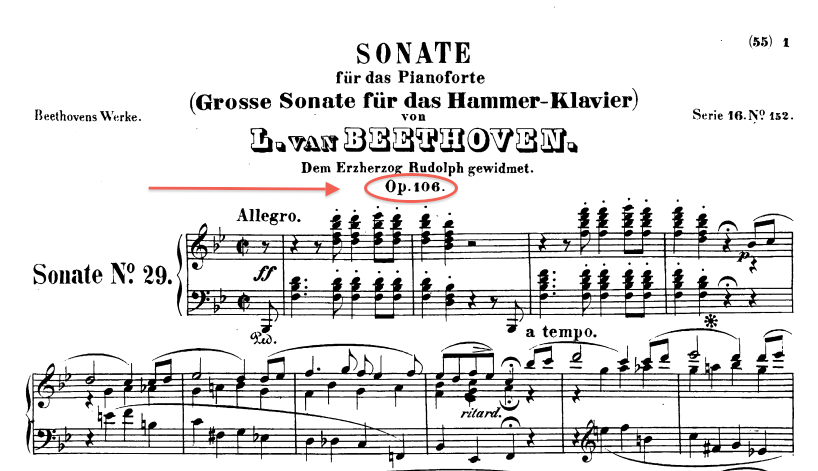You open a program and see this title:
Sonata No. 29 in B-Flat major, “Hammerklavier,” Opus 106
What does it all mean? Titles of music compositions can be puzzling, but they follow a predictable format that tells us a certain amount about the piece. So let’s decipher them and, in this post, we’ll start with the term Opus.
Opus (abbreviated op.) is the Latin noun for “work”—not work as in rotating the tires, but a “creative” work, like a novel, painting, or musical composition. Lots of disciplines use the term opus. In fact, we often use the expression magnum opus to refer to someone’s “greatest work” or accomplishment.
It’s all about publication.
But in music, an opus number is a specific sequencing number traditionally issued upon publication of a composition. It won’t tell us when the piece was written, but it does tell us where the piece fits in the sequence of the composer’s publications.
Most of the time, a high number (opus 65) means a mid to late work. But imagine a situation where a 22-year old composer writes a song that sits around on his piano for 35 years. Suddenly, it gets published, and receives a high opus number, making it look like a work from his maturity.
Works that didn’t get published (for all kinds of reasons) are sometimes later organized and given “W.o.O” numbers. This funny term comes from the German phrase Werk ohne Opuszahl (work without opus number). And, yes, musicians really do call them Woo works. W.o.O 1, W.o.O. 23, W.o.O 114. Isn’t that cool?
One final thing. The Italian equivalent of opus is opera. That’s exactly where the word “opera” comes from, dating back to early 17th-century Italy when the new “sung plays” were described as opera per music (work with music).
So now you can call yourself an Opus specialists! We’ll decipher the rest of the title in a future post.




